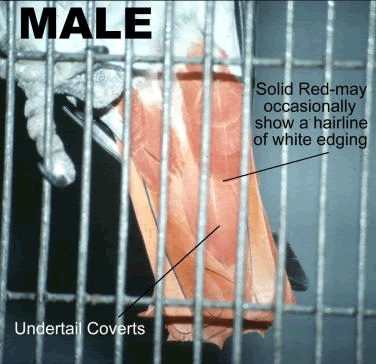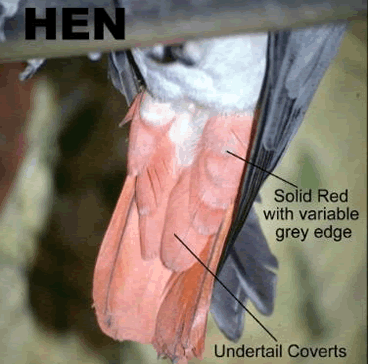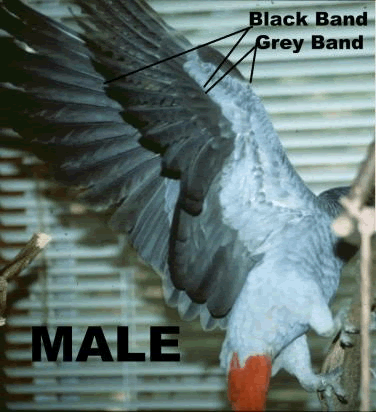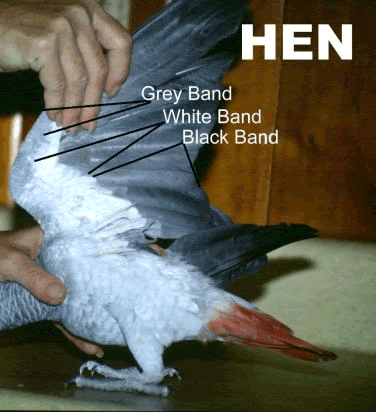This is to be used only as a quick guide and is not intended to replace DNA or surgical sexing. Most aviculturists are aware of the males being darker in color. This can only be based on the fact both birds originated in the same region of Africa or they are chicks from the same clutch. Also, hens may have a gradual dark-to-light transition of gray from the neck to the belly, while males have a more uniform gray in the same area.
Importers used the under-tail coverts as the guide for sexing. This should not be termed "vent area" or "ventral feathers." The under-tail coverts are directly under the tail feathers and consist of about 10 feathers. Feathers of the hens will be edged in gray, while those of the males will be solid red. Males will occasionally have a hairline of white on the edge.
This is not for babies, and should be used for older greys, approx 18 months and older. The pictures are not great, but they will give you a reasonable idea of what to look for. The grey on the hens can be 1/16th of an inch to almost 1/3 of the feather. I have seen some hens where you could see the grey edge halfway across a room.






this is Buy Timneh, If you are looking for the best and reliable place to purchase an African Grey Parrot Online search no more.Visit and view the wide range however of hand-raised Buy Timneh African Grey Parrot For Sale(Tina) african grey parrots for sale online
ReplyDelete